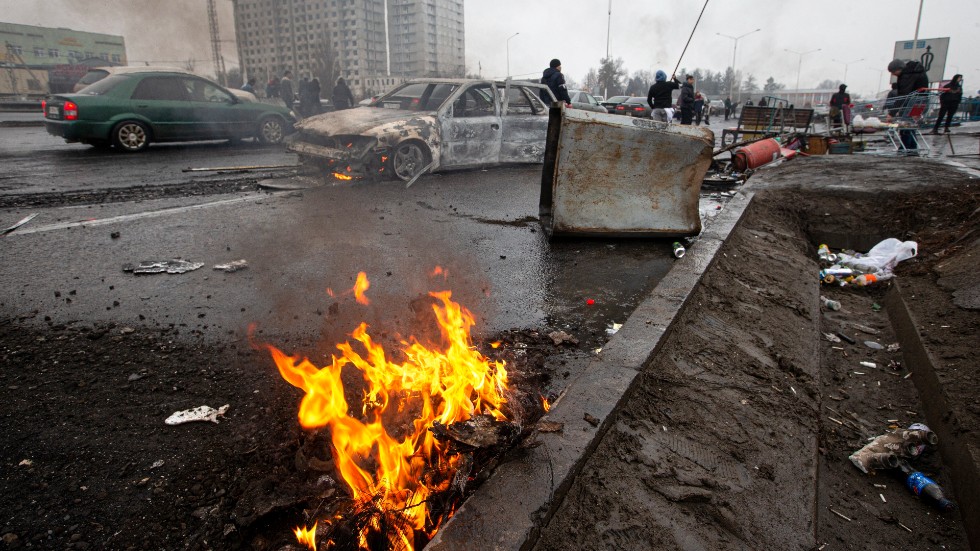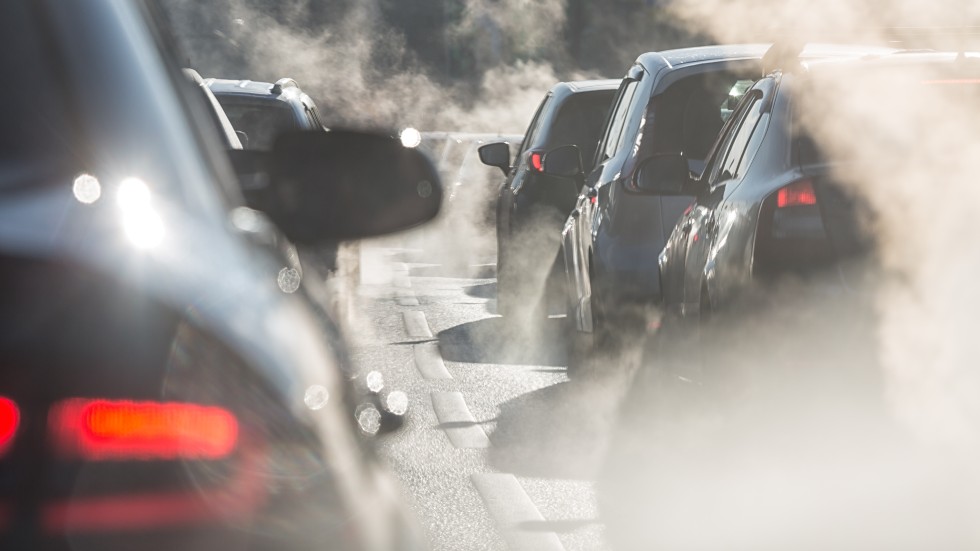Equilibrium/Sustainability — Fire calls infrastructural integrity into question

Today is Monday. Welcome to Equilibrium, a newsletter that tracks the growing global battle over the future of sustainability. Subscribe here: digital-release.thehill.com/newsletter-signup.
After a deadly blaze killed at least 17 people — including 8 children — in a Bronx high-rise building on Sunday morning, residents are pointing out systematic infrastructural issues that may have fanned the flames.
Fire Department Commissioner Daniel Nigro determined on Sunday that a malfunctioning space heater caused the fire, while an open door had allowed the smoke to spread, The New York Times reported. Fire marshals are conducting an investigation, including into whether the building’s doors had the automatic closing feature mandated by city laws, Mayor Eric Adams told Fox Monday, as cited by Bloomberg.
But residents have also said that the building had a faulty system that for years triggered false alarms at all hours, according to The City, a New York-based nonprofit digital news platform.
Today we’ll look at a crisis in Kazakhstan, where at least 164 people died amid violent anti-government protests initially rooted in an uprising over energy prices. Then we’ll look at a series of studies that suggest most city dwellers around the world are breathing unsafe air.
For Equilibrium, we are Saul Elbein and Sharon Udasin. Please send tips or comments to Saul at selbein@digital-release.thehill.com or Sharon at sudasin@digital-release.thehill.com. Follow us on Twitter: @saul_elbein and @sharonudasin.
Let’s get to it.
Deadly Kazakhstan protests jostle global oil

What happened? Protests began in western Kazakhstan’s western last weekend, originally over a spike in energy prices, the Post reported.
But demonstrations spread across the country, escalating into a challenge against former president Nursultan Nazarbayev, who ruled the country for three decades until his resignation in March 2019, according to the Post.
This was by far the worst violence in 30 years, in a country that has long been viewed as the most stable former Soviet nation in Central Asia, Reuters reported.
Kazakh president describes upheaval as coup: Kazakh President Kassym-Jomart Tokayev said on Monday that the events over the past week were an attempted coup d’etat, and that he would soon provide proof to the international community, according to the Post.
He and other officials have repeatedly described those who participated in the upheaval as trained “terrorists,” contending that many of the participants came into Kazakhastan from abroad, the Post reported.
Entrance of “peacekeeping” forces: As tensions rose last week, Tokayev called on the Russian-led Collective Security Treaty Organization on Wednesday to send in “peacekeeping” forces to help “stabilize” Kazakhstan, the Post reported.
Russian troops served to strengthen and protect key installations, after protesters torched public buildings and gained control over the airport, Reuters reported, citing Russian news agencies. About 2,500 troops are still in the county but are expected to depart soon, according to the Post.
Putin claims victory: Russian President Vladimir Putin claimed victory in the effort to protect Kazakhstan from what he, too, described as a foreign-back terrorist insurgence, Reuters reported.
The measures taken by the Collective Security Treaty Organization, Putin said, “have clearly shown we will not allow the situation to be rocked at home,” as reported by Reuters.
Rebirth of the Soviet Union? Kazakhstan’s troubles could help strengthen Putin’s efforts “to reestablish Russian hegemony within the borders of the former U.S.S.R.,” John Bolton, former President Obama’s national security adviser, wrote in an op-ed in The Wall Street Journal.
Tokayev, Nazarbayev’s handpicked successor, wasted no time in requesting Russian troops, while giving orders to “shoot to kill without warning,” Bolton stated, noting that both Kazakhstan and Belarus are “prominent candidates for full reintegration into Russia.”
PROTESTS THAT BEGAN WITH GAS PRICES DRIVE UP GAS PRICES
The Kazakhstan protests began following a Jan. 1 government decision to lift price caps on liquefied petroleum gas (LPG), a cheaper alternative to gasoline used by most Kazakhs, Azerbaijani English newspaper AzerNews reported.
Amid the upheaval, which included unrest at the country’s Tengiz oil and gas field, the government agreed to restore some price caps on Tuesday, according to AzerNews.
Tengiz was gradually returning to normal production levels, S&P Global Platts reported on Saturday. After Russia, Kazakhstan is the second largest producer of crude oil among former Soviet Union countries — trailing behind only Russia, according to Platts.
Knock-on effects for global crude: Over the course of last week’s protests, crude prices gained 5 percent, and on Friday, the Brent crude oil price — a benchmark for financial markets — rose to more than $83 per barrel, the International Business Times reported.
This put Brent “at its highest level since the price slide triggered by the first appearance of the Omicron variant in late November,” Carsten Fritsch, commodities analyst at Commerzbank, told the Times.
By Monday, however, crude prices decreased slightly, while Brent was trading at $81.60 per barrel, according to Barron’s.
Beijing also concerned: China fearing that the turmoil in Kazakhstan could impact its energy supply security was hosting foreign ministers of Gulf states this week, the South China Morning Post reported.
Zhou Chenming, a researcher from the Yuan Wan military science and technology institute, said that China was doing so in hopes of mitigating supply chain issues, according to the Post.
Last words: “Kazakhstan is the key energy supplier for Beijing’s West-East Gas Pipeline program in Central Asia,” Zhou told the Post. “If any energy crisis happens because the West-East gas pipeline is forced to halt, only the Gulf countries can act as a replacement.”
Clean air in cities is the exception, not the rule

The vast majority of city-dwellers around the world — 86 percent, or 2.5 billion people — are breathing in air that has levels of fine particulate matter at levels higher than what the World Health Organization recommends, according to a recent study.
First words: “The majority of the world’s urban population still live in areas with unhealthy levels of PM 2.5,” lead author Veronica Southerland, of George Washington University, said in a statement.
Behind the quote: That pollution — which is associated in cities largely with the burning of fossil fuels — was responsible for 1.8 million additional deaths in 2019, according to the study, which was published in The Lancet Planetary Health journal.
The burden of pollution falls particularly hard on children, according to another Lancet study, which found that the pollutant nitrogen dioxide, or NO2 — a common byproduct of burning fossil fuels in cars and power plants — has led to almost 2 million additional cases of childhood asthma.
There was some good news: Researchers noted that efforts to clean up roadways and industrial sites in the U.S. and Europe had led the share of childhood asthma caused by NO2 to fall from 20 percent to 16 percent over the two decades between 2000 and 2019.
“The findings suggest that clean air must be a critical part of strategies aimed at keeping children healthy,” study co-author Susan Anenberg, of George Washington University, said in a statement.
EVEN ‘SAFE’ LEVELS OF FOSSIL FUEL POLLUTANTS MAY NOT BE SAFE
But fossil fuel pollution causes death and damage even at levels deemed safe by the Environmental Protection Agency, the European Union and the World Health Organization (WHO), according to a third study published this month in the Lancet.
What the data shows: Long-term exposure to PM 2.5 — and other compounds produced by burning fossil fuels — leads to higher rates of heart disease, lung cancer and childhood asthma even at levels below those deemed safe by the EPA, EU and WHO, the study found.
What is PM 2.5? PM2.5 stands for fine particulate matter — often emitted by combustion or in wildfire ash — that are 2.5 micrometers, or 20 to 30 times smaller than a human hair. Their tiny size allows them to bypass the hairs and mucous membranes that the body uses to protect itself against contaminants, penetrating deep into the bloodstream and leading to lung, vascular and heart disease.
That study looked at the impacts posed by breathing in low levels of NO2, ozone (O3), PM 2.5 and black carbon (soot) — all common byproducts of burning fossil fuels in cars and power plants. It found that long-term exposure to these compounds was correlated with higher rates of death from lung cancer and respiratory disease, the study found.
Takeaway: The studies on increased asthma and mortality “underscore the urgency of improving urban air quality and reducing reliance of fossil fuels in and around our cities,” said Robert Hughes of the London School of Hygiene & Tropical Medicine, in a statement.
“While the specific policies to do this vary from city to city, a common theme is that we need to radically cut down on the combustion of fossil fuels everywhere; put simply, we need to ‘stop burning stuff,’ especially where we live,” Hughes said.
Specifically, Hughes explained, cutting down on combustion means moving away from using fossil fuels for home heating and to power electric utilities and transportation.
Medical Monday

Dangerous packaging, omicron breaks hospitals and Colombians win “a dignified death.”
FDA must address endocrine-disrupting phthalates: House Oversight
- The Food and Drug Administration (FDA) must take immediate action to address a class of endocrine-disrupting compounds, called phthalates, that continue to plague American food packaging, the House Oversight and Reform Committee demanded in a letter on Monday, as reported by The Hill. Exposure to phthalates is associated with birth defects, infertility, learning disabilities and neurological disorders.
- “The agency has fallen short in protecting vulnerable Americans from the pernicious effects of foods contaminated with phthalates,” wrote Rep. Raja Krishnamoorthi (D-Ill.), chairman of the Oversight and Reform Subcommittee on Economic and Consumer Policy. The letter called out the FDA for continuing to permit 28 different phthalates in food processing and packaging materials, while failing to rule on a 2016 petition to ban the chemicals in these materials.
Omicron is fracturing an already stressed health care system
- Though omicron is milder than previous coronavirus variants and 62 percent of the population is vaccinated, it is pushing already burnt-out hospital workers — and health care systems — to the breaking point, The Atlantic reported. “Here, then, is the most important difference about this surge: It comes on the back of all the prior ones,” the piece stated.
- “This just feels like one wave too many,” emergency room doctor Megan Ranney told The Atlantic, which noted that “The health-care system will continue to pay these costs long after COVID hospitalizations fall. Health-care workers will know, but most other people will be oblivious—until they need medical care and can’t get it.”
A “dignified death” for Colombians with degenerative disease
- Two Colombians with serious — but non-terminal — degenerative illnesses were euthanized this weekend, after winning protracted legal battles for the right to “a dignified death,” as Victor Escobar, one of the two, said in a video message, according to Reuters.
- While 178 terminally ill Colombians obtained legal euthanasia as of October 2020, the courts had previously blocked its use by patients like Escobar, Reuters reported. Escobar suffered from end-stage chronic obstructive pulmonary disease, while Marta Sepulveda — the other woman who “underwent the procedure” this weekend — suffered from ALA, or Lou Gehrig’s disease.
Please visit The Hill’s sustainability section online for the web version of this newsletter and more stories. We’ll see you on Tuesday.
Copyright 2023 Nexstar Media Inc. All rights reserved. This material may not be published, broadcast, rewritten, or redistributed.

